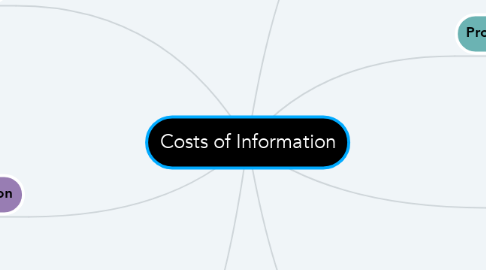Costs of Information
by Parker Shaw

1. Commoditized Information
1.1. Producers need to do everything they can to make sure their information isn't a commodity.
1.2. Differentiation is good for the information market infrastructure.
2. Variable Costs of Reproduction
2.1. Costs of information reproduction are next to none, thus they are variable costs.
2.2. Since information reproduction costs next-to-nothing and production costs are extremely high, an economy of scale comes into play: the more you produce, the lower your average cost of production.
3. Distribution Costs
3.1. Much like variable costs of reproduction. Costs of distribution for information markets are low since there are many digital formats to distribute on.
3.2. Production and distribution differ in the information marketplace because information costs almost nothing to reproduce, but a lot of sunk money to produce.
4. Differentiation
4.1. Information can be successfully differentiated if you exploit the unique features and functions of the internet.
4.2. Asserting intellectual property rights is one way to protect the differentiated copy of information.
5. Fixed Costs of Production
5.1. Costs that are large in relation to the information market. Leads to economies of scale.
5.2. Fixed costs in the information market are things like the cost of running a website.
6. Sunk Costs
6.1. Sunk costs are costs that cannot be retrieved when trying to re-sell a good.
6.2. Sunk costs are almost impossible to get back in the information market, one of the few reasons why the initial first-production price of information is so high.
7. Production Costs
7.1. Production costs of information are much higher than reproduction costs.
7.2. Production costs are very high in the information market due to the unretrievable sunk costs.


